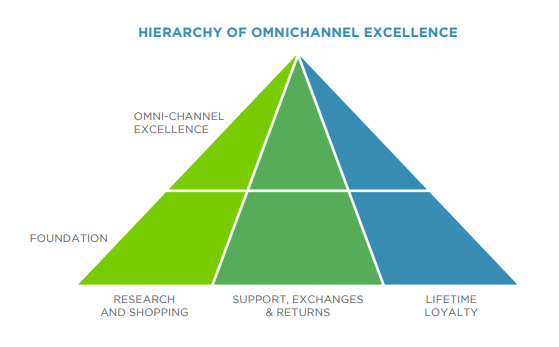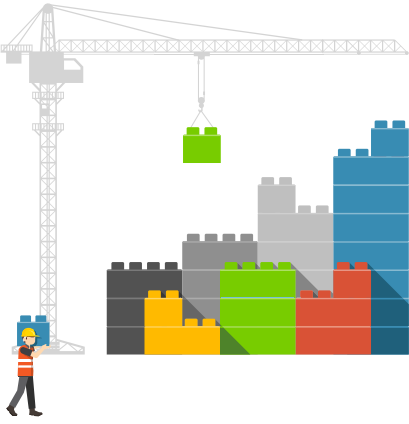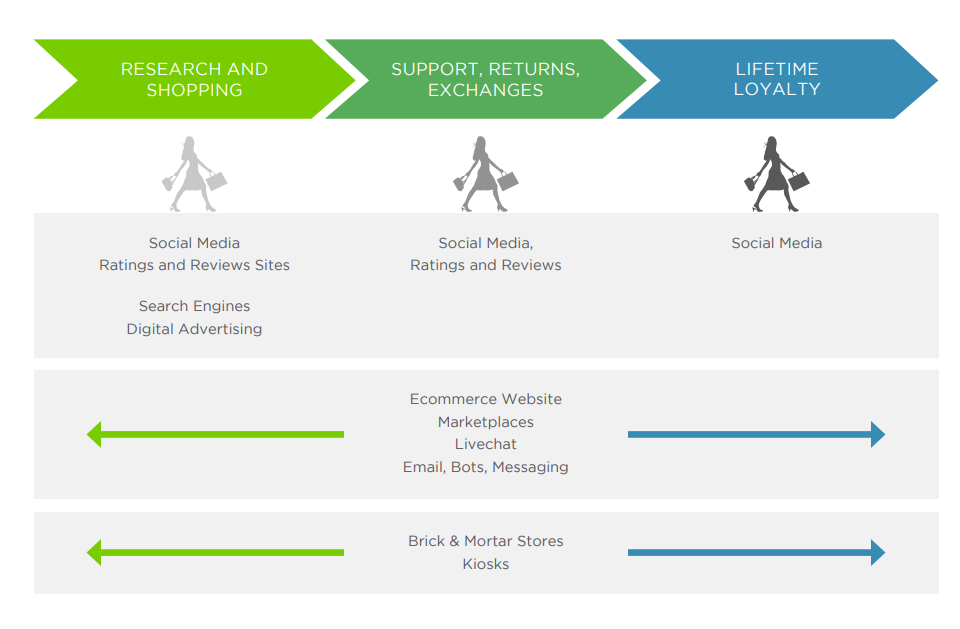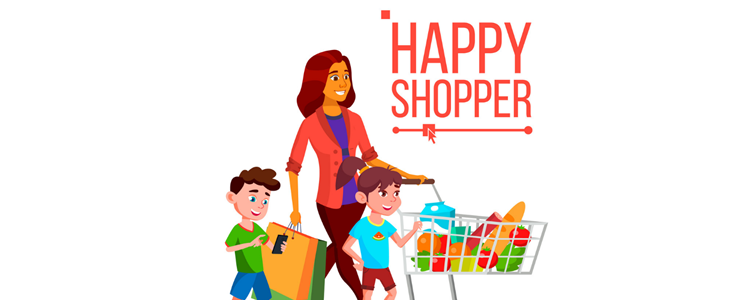When you ring up a sale with a brand new customer, whether online or in a store, is that the end of the relationship? Or is it just the beginning? In her best-selling book “The Membership Economy,” Robbie Kellman Baxter makes a clear case for the latter. The economics are profound, as it costs 7x more to acquire a new customer than to earn a repeat visit.
Brand loyalty is the key to growth for almost all retail categories. Whether your business relies heavily on repeat visits (e.g. sports apparel stores) or on low frequency purchases (e.g. a wedding reception decorations retailer), brand loyalty matters. You’d love for that soccer aficionado to shop every season. And you’d love for a recent bride to recommend your store, whether online or brick & mortar, to her friends when the time comes.
You build loyalty through great shopping experiences and customer touch points. One hundred years ago, those experiences began in stores, through interactions with store associates. And they continued with ongoing personal
relationships. People’s lives centered on relatively small geographic areas, and retailers learned about their customers in person. Today, we are a mobile society. Store associates aren’t lifetime employees, and loyal shoppers visit multiple locations of their favorite retailers, including online.
The proliferation of customer touch points during the past 20 years has been immense. Meanwhile, your ability to truly know your customers, and how they interact with you, has become near impossible. Consider a shopper who just walked into one of your stores. Imagine if store associates knew the answers to all of these questions:
- Did she do any research before walking in? What products was she browsing?
- Has he shopped here previously? What did he buy and what brands does he like most?
- How happy was she with her last purchase here? Has she returned anything?
- Has he purchased from us online? Was it from our site? Or from a marketplace?
- Does she talk about our category, or about us, on social media?
- Have we interacted with him after the sale? Live chat? Contact Center? Chat bots?
Your customer is capable of remembering all of it. And increasingly, as shoppers, they expect you to remember too — to know them across all the touch points they’ve experienced with you. And while technology is the driver behind channel proliferation, technology has not kept up with your need to know about all of those new types of interactions as your customers move from your site, to your store, to the telephone contact center. And back to the store again.
In this whitepaper, we will explore the challenges that retailers face in delivering omnichannel customer satisfaction as well as the solutions.
We will follow customers along the buyer journey.

How can you treat individual customers consistently, as if your brand truly knows them, regardless of whether they are on social media, buying on a marketplace, or in your store? And given that we can’t possibly know every single touch point, how can we, at a minimum, intelligently ensure that every interaction that customers have will be positive.
We will also, for many of the touchpoints within each step, cover the foundational capabilities you need in place, as well as those that will help you achieve omnichannel excellence.

Customer Loyalty Building Blocks

Intuitively, if you’re a retailer, you know that loyalty begins with the basics. Customers have needs, and they come to you to buy the products that will satisfy those needs.
- “I’m having a wedding, and I need party favors.”
- “Soccer season begins in 3 weeks, and I need practice gear.”
- “We’re headed to Mexico for the winter holiday, and I need SPF 30 swimwear.”
The Basics
As a retailer, you help shoppers find the products that will make them happy, and you make the purchase process as easy as possible. You deliver where and when you promised you would. And, if your new customer has questions, or wants to return or exchange a product, you answer their questions quickly and make returns and exchanges simple too. You might even go a step further, with a basic loyalty program that rewards purchases.
Except, the basics aren’t simple anymore, because at every step of the buyer journey, customers are not just changing lanes on the highway, they’re switching from planes, to trains to automobiles… to SpaceX (see figure 1).

Shopping and Research
To serve your well-informed customers better, you need to know what they know. Before entering the store, what did they learn from google searches, reviews, twitter and your Facebook page? How does pricing and return policy vary between your ecommerce site, marketplaces, and your stores? Are your contact centers giving the same answers to the same questions as your live chat operators and your store associates?
Support, Returns & Exchanges
Return and exchange policy and execution are two of the most important factors consumers consider when choosing a retailer – whether buying online or in stores. In fact, according to the UPS Pulse of the Online Shopper™ study, 66% of shoppers review a retailer’s return policy before making a purchase. At a minimum, this must be a simple process. More advanced retailers are enabling customers to buy, modify an order, return and exchange across multiple contact channels. The easier we make it for customers, the more likely they are to return.
- Are each of your channels providing great support?
- Are they able to interact with a customer the same across all channels?
- Or is your company treating one customer like three:
(1) the store customer, (2) the website customer, and
(3) the call center customer?
Lifetime Loyalty
Loyalty programs are everywhere we turn. From buy 10, get 1 free punch cards, to rewards points, to discounts off the next purchase, retailers are in an arms race to keep customers coming back. And loyalty programs help you get to know your customers better too. Are you keeping your customers engaged with your brand after they walk out with their first purchase?
The basics matter
While there are a myriad of initiatives within each loyalty driver that we can enhance, retailers ignore the basics at their peril:
- 89% of customers have stopped buying from online stores after they’ve experienced poor service (source: Right Now)
- A 5% reduction in customer abandonment rate can increase profitability by 25% – 125%. (Source: “Leading on the Edge of
Chaos,” Murphy & Murphy)

